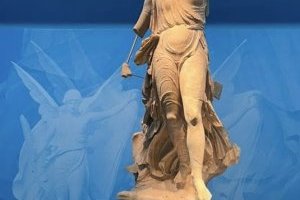
I visited Ancient Olympia on the very day of the opening ceremony of the Paris Olympic Games 2024, hoping to catch some special activities or celebrations connecting the ancient birthplace of the Olympics with the modern global event. To my surprise, the site was peaceful and quiet, with no visible link or festivities marking the occasion. Despite the significance of the date, there was nothing at all to highlight the connection between the ancient games and today’s Olympics. Nevertheless, the visit was far from disappointing. Walking among the ruins of the ancient stadium, temples, and training grounds offered a humbling glimpse into the origins of this world-renowned sporting tradition.
One of the most impressive sights was the Temple of Zeus, once home to the massive statue of Zeus, which was considered one of the Seven Wonders of the Ancient World. Although now largely in ruins, the remaining columns and foundation still convey a powerful sense of grandeur and magnificence. Standing there, it’s easy to imagine the scale and awe that this temple inspired in visitors thousands of years ago. Nearby stands the Temple of Hera, one of the oldest temples at Olympia and an important part of the site's legacy. It’s here that the modern Olympic flame is lit before every Olympic Games, during a solemn and theatrical ceremony using a parabolic mirror to harness the sun’s rays, a symbolic gesture linking ancient ritual to modern global unity. Approaching the Ancient Stadium, it was tempting to …
Keep reading 0 comments
This is one of my personal favorite WHS. However, even for visitors from our own country, its history remains quite unfamiliar, and the site itself is not among the more popular tourist destinations. That’s why I’d love to share a bit about my experience here.
In October 2023, just before the first snow, I visited this site with my family during a long self-driving trip along the China–North Korea border.
The different parts of the site are scattered around the outskirts of Ji'an, a lively small town with a large ethnic Korean population. It’s not easy to get there by public transportation, so having or renting a car really helped.
Before entering the site itself, we first visited the Ji’an Museum in the town. It provides a great introduction to the history of the Goguryeo Kingdom and displays exquisite artifacts excavated from the site. My personal favorites were the horse ornaments, which had a very unique and striking style. The whole museum can be visited in about an hour, and I highly recommend stopping by before heading to the heritage site.
After that, we drove to Wandu Mountain City, located in the mountains, featuring the remains of city walls, gates, and palace foundations. It was late autumn, and the mountains were absolutely breathtaking with vibrant colors—locals call this rich autumn landscape five-Colored Mountain. We first walked to the palace site, where only the foundation remains are still visible, right next to a cornfield tended …
Keep reading 0 comments
Admittedly, I was not excited to check off this site — I wasn’t sure what to expect, and six components spread out seemed daunting. And it was hard to find information.
But, I ended up visiting all components over three days in Berlin and the site ended up winning me over. But, I am a sucker for modern architecture, Bauhaus, and the likes.
I got more out of the sites for two reasons. First, I started at the Into Station and Cafe at Briz, which is open on Friday and Sunday afternoons. There is a museum (1 euro entry fee) with a ton of information in German and English and a model apartment. It was the highlight of my visit. Second, www.welterbe-moderne-Berlin.de has great information on these sites and even mini walking “tours” pointing out key components of all the sites with maps It was tremendously helpful and I got a lot more out of the sites as a result
Logistics: I will start out with a warning: DO NOT BOOK the Ticket B tour of Siemensstadt, which advertises going into an apartment in Siemensstadt, because the apartment visited is in a nearby complex and belonged to one of the Siemensstadt architects, but it was built 30 years after Siemensstadt and is NOT part tix the UNESCO site. I wasted 39 euros and 5.5 hours (transit one hour each way and a 2.5 hour tour) to end up not getting anything more out of the experience than …
Keep reading 0 comments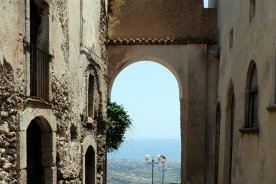
Of the 5 sites listed for consideration, I have only managed to go to one of them, Gerace. I found Gerace to be a charming and interesting southern Italian hilltop village (it's actually on the list of the most beautiful villages in Italy). It has an interesting history, having at various points, been occupied by Romans, Moors, Greeks, Normans and Byzantines, all of whom have left their mark on the village.It was astounding to read that this small community once boasted 123 churches! Even today there are 17, a disproportionate number for the size of the village. The star of the show is the Norman Cathedral, the biggest building in the region (sadly undergoing restoration while I was there). It also has the oldest Greek Orthodox church in Italy in a charming little square known as the three churches square,There's a terrace running around the village that overlooks Locri and the Ionian sea with a former monastery (now a priory) behind you.The narrow cobbled streets and rustic houses are a joy to wander around.For such a charming village that is on the UNESCO Tentative list, I was surprised by the lack of tourists. I guess the resorts that attract the tourists in Calabria, are just a bit too far.I spotted a small supermarket, a bank, half a dozens bars and cafe's and a smattering of restaurants, none of them seemingly busy. At 2 everything closed for a Siesta anyway.I would say, on balance, it was the most enjoyable place I …
Keep reading 0 comments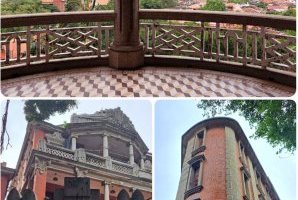
Going to Gulangyu is very straight-forward: a bus to the International Ferry Terminal, then a smooth 20-minute boat ride to the island. If one decides to leave the island after 6PM as my friend and I did, the ferries for tourists then operate at the Piano Ferry Terminal, making the return trip shorter (it also makes it easier to go to Zhongzhan Road next, another top tourist attraction of Xiamen). Before going to Gulangyu, I made a mental note on the buildings that Els failed to see as I curiously wanted to check them out. Upon exiting Sanqiutian Ferry Terminal, the imposing neo-Classical former building of the American Consulate (1930) greets you. Beside it is the former building of the Hongning Hospital, a brick corner building in the style of late Amoy Deco. As it is dubbed as the "Most Beautiful Corner of Gulangyu," a lot of locals are familiar with this building and they make their way up to this point to take their photos. Afterwards, they proceed to the more popular spots on the island namely the Organ Museum/Bagua Mansion (1908), the Piano Museum, and Sunset Rock.
As we were held hostage by the rain early on that day, we sought shelter at Rivers Cafe, which is housed in one of the marked villas. The hour or so spent there was not wasted as we took that opportunity to explore what one of the old villas, which are often fenced and closed, looks like on …
Keep reading 0 comments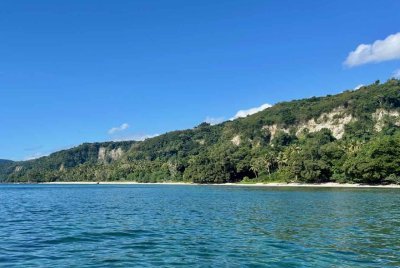
It took four attempts and five years for us to finally visit Vanuatu and Chief Roi Mata’s Domain, thanks to Covid, issues with Air Vanuatu in the lead up to it going into administration and the recent earthquake. Luckily though, it was only in the aftermath of the earthquake that I came across M Resort, a luxury resort that opened in March 2024, just outside the site’s core zone on the northeastern coastline of Efate.
I thought a visit to the Chief Roi Mata’s Domain would be easy from the resort - it was literally in the buffer zone. But during the earthquake, landslides largely destroyed Fels Cave, probably the most memorable part of the site. The remaining section of the cave cannot be visited for now (or perhaps permanently) due to the danger of further falls. Plus I discovered that visiting Hat Island and the burial ground is considered taboo by local chiefs. The local boat trip we took wouldn’t visit it, but we did meet a small tour group that was intending to visit it - probably some tours from Port Vila disregard the taboo.
However, quite by chance at first, we ended up visiting the former village and residence site, Mangaas. Our resort owner recommended walking to the nearby sandy beach, King’s Beach, and afterwards we realised it was the third corner of the core zone. It was only a 10-15 minute walk from our resort, so we later returned and explored the area thoroughly. …
Keep reading 0 comments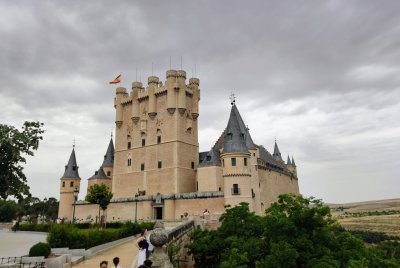
June 2025 visit. Segovia will forever be pitted against its sibling city, Toledo. (Both are medieval towns that easily done as a daytrip from Madrid.) While I enjoyed Toledo more, Segovia is still well worth a visit. Over the last nine months of living here in Spain, my wife and I have visited a new locale in the country practically every couple of weeks, including thirty-one World Heritage Sites between Spain and the neighboring countries. We are finally feeling a bit "travelled-out", especially of Spanish sites, so keep that coloring in mind while reading my review.
Segovia has a lot of what you can find spread out in bits among other Spanish WHS's, but all in one place. And that's a good thing! It's a concentrated dose of beautiful Spanish history. The aqueduct of Tarracao, the medieval streets of Toledo, the cathedral reminicent of Salamanca, it's all present and convenient in Segovia. The castle (Alcázar) is truly beautiful and has an exterior that I will admit you will not find anywhere else in the country. The Alcázar has an audio guide tour that I quite enjoyed, and it has lots of interesting rooms to see without being too overly long like some of the royal palaces you can tour in Spain.
The town is known for its suckling pig (called "cochinillo") and it can be found at a variety of local restaurants. It's worth trying, I really liked it! A long Spanish lunch, a couple …
Keep reading 0 comments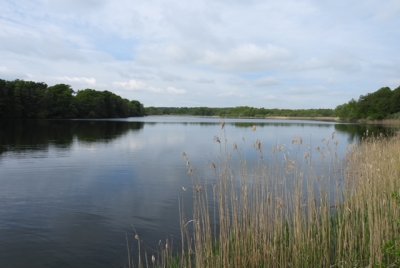
Visit date(s): May 10, 2025
Nearby sites on trip: Over 2 weeks: Frontiers of the Roman Empire, German Limes; Bamberg; Potsdam; Primeval Beech Forests, Serrahn; Stralsund and Wismar; Lübeck; Schwerin Residence Ensemble; Berlin Modernism Housing Estates, Wohnstadt Carl Legien, Museumsinsel.
Overnight location: Lübeck before, Schwerin after.
Location(s): Schaalsee
Travel method(s): car, foot
Travel duration: less than an hour from Lübeck or to Schwerin
Visit duration: ~ 1-2 hours
OUV: I was sceptical when I first read about this nomination. The significance is actually the history of the areas, rather than the nature of the parks themselves. The much larger European green belt proposal (not necessarily as a UNESCO site, although, if this one does get a nod, I could see this as a transnational site in the future) somehow makes the idea seem more significant. Perhaps it would be better to rework the concept to include comments about what was there before, possibly changing it to a mixed nomination. With a little focus on why the parks can be built along these corridors, it could turn into a history lesson, as well as a beautiful place to exercise, relax and heal, and could support its inclusion.
Best of: Nature seems to have recovered quickly, and the plants and animals have taken over again.
Worst of: Neither the green belt as a whole, nor the individual park was well signed.
Keep reading 0 comments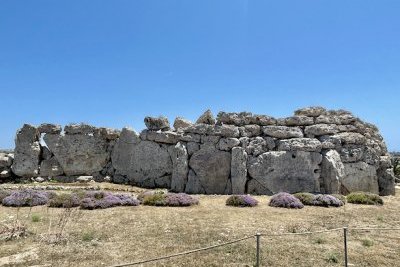
I managed to visit 4 of the 6 inscribed temples so I wanted to leave some short thoughts on them (and also some updated pricing info)! You can buy a pass to all museum sites in Malta (besides the Hypogeum) for 60 euros now as of 2025... but this is too expensive if you just want to see the WHS. So, instead I spent 26 euro seeing 4 temples.
- Tarxien: only a 10 min walk from the Hypogeum! Tarxien has rock carvings, something I didn't see at the other 4 temples -- giving it a different "vibe" from the others. Hypogeum museum staff even gave me a map at the specifically encouraging me to visit it so it's hard to pass up :) I think this is also the only site I visited that is completely wheelchair accessible, with paved ramps taking you in and around the temple.
- Cons: most of what was interesting there seemed to be reconstructions. Tarxien also doesn't stand as tall as the other sites.
- Ħaġar Qim & Mnajdra: These two are really similar and hard for me to differentiate. Main benefit is that they aren't hard to get to from Valleta and are near touristy things like the Blue Grotto. They are a 10 minute walk away from one another, so it makes sense to visit both.
- You can buy a combo ticket for the 3 aforementioned temples (Tarxien, Ħaġar Qim & Mnajdra) for 16 euros. …
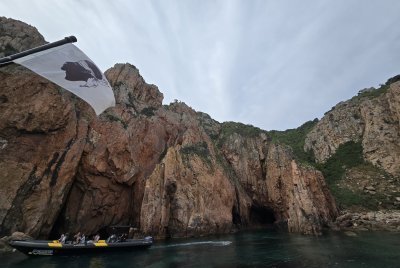
We visited the Gulf of Porto between 4 - 6 June 2025. We had a hire car and drove up from Bonifacio. We decided to drive along the Stradi di e Calanche Road through the mountains that borders the UNESCO inscribed gulf. Once you pass through Piana, a short time later you will drive past a fairly small sign advising you that you have entered the UNESCO area. Blink though and you will miss the sign. The drive along this part of the coast provided amazing views of the Gulf and the land formations along the southwestern part of the gulf before arriving in Porto itself. We stayed in Hotel Subrini which is right on the foreshore overlooking the bay and the old Genoese Tower that stands on the peninsular looking over the bay. 2.50 Euro to climb the tower for a view of the bay. We explored the foreshore of Porto in the afternoon and booked a tour for the following day. There are a number of tours and companies to choose from depending on your budget and preferences. We chose a 3.15hour tour with Porto Adventure for 30 Euro that took in the whole bay that included going up the coast to visit Scandola to the north and then across to Capo Rosso to the south, returning to Porto. It did not include a land-based visit to Girolata, as this was only available on a full 8-hour tour which did not suit our schedule.
Our tour group …
Keep reading 0 comments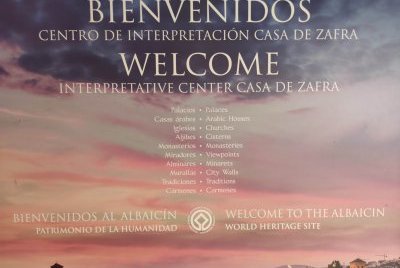
I visited in June 2025. My experience of the Alhambra was certainly unique...! There are some important things to note when visiting:
- As people have mentioned, book your Alhambra tickets well in advance. It's Spain's second most visited tourist attraction outside of the Sagrada Familia, so it's incredibly popular year-round.
- Bring your identification! We literally watched a woman weeping as she and her husband were turned away at the entrance, which is pretty removed from the rest of the city, because they had their tickets but did not bring their passports. They were staying in an Airbnb so there was no easy way to go back and get their ID without completely missing their timeslot. This leads to the next point...
- Arrive early! When you arrive and get your tickets (if you didn't receive a digital QR code) or scan your existing tickets, you will think you have "entered" the Alhambra but you actually haven't. Confusingly, there is another 15-minute walk you have to take across the complex where you scan your tickets again and only then are you considered "inside" the grounds for your ticket time. You will then be required to re-scan your tickets and passports many times throughout the duration of the tour through the grounds, for some reason.
At the area with ticket booth, there are official guides available that will give tours to your group for 30€/person. (Which they claim is cheaper than online.) I really wanted …
Keep reading 0 comments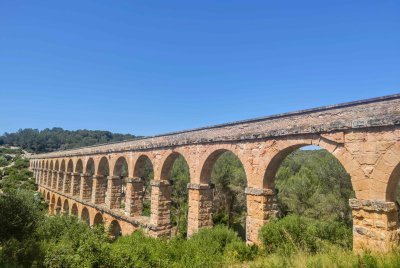
For me, Tarraco (Tarragona as it is called today) is a light 3.5 stars for me, bordering on a 3. As you can gather from the other reviews on here, none of the individual locations are particularly jaw-dropping for this WHS, but taken together they make up quite an interesting vision of Roman life. Also, the fact that this is one of the first Roman settlements not only in Spain, but outside of Italy as a whole is just plain cool.
Tarragona has done a decent job of making each of these locations accessible and providing explanations of what you're seeing via signage and audiovisual displays at each of them. If you want to just hit the biggest highlights and avoid the stuff that are mostly just "rocks" or a piece of hardly-identifiable architecture, then I recommend doing the Amphitheatre, the Circus, the Walls, and the Aqueduct. This is more or less what my group did, as we were limited on time and there is only so much I can convince my non-WHS friends to go out of their way for. Of all these items I'd say the Aqueduct was the most impressive but the Circus really surprises with its unassuming entrance and then vast network of ruins to see once you're inside.
Be aware that most (not all) of these locations you will have to pay separate entrance fees for, so it can get slightly spendy if you're trying to hit all of …
Keep reading 0 comments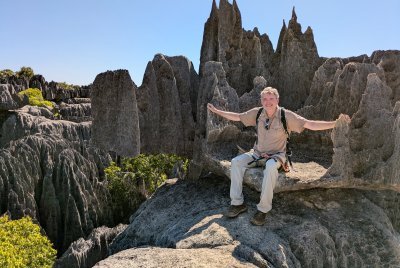
I was really pleased to visit the Tsingy de Bemaraha, because an article years ago in National Geographic about them was what really got me interested in visiting Madagascar. Climbing on, and walking through the tsingy was really fun. You're really exploring an odd landscape.
Getting There
We visited in mid-May, near the beginning of the season there, as the roads aren't reliably dry enough to be open before May. Our trip was similar to what others have mentioned here; the trip getting to the tsingy is really a large part of the experience. We flew to Morondava, then briefly enjoyed the Avenue of the Baobabs en route to a one night stopover in the Kirindy Forest. Here we stayed in pretty rustic cabins (no hot water, limited hours electricity) at the Akiba Lodge, but loved the place -- the lemurs are just steps from your cabin. The next day, it's back in the car for the drive to Bekopaka, the village near the tsingy. About halfway there, we stopped for lunch at what we considered Madagascar's best restaurant, the Mad Zebu in Belo Tsiribihina.
After lunch, it's a long ferry crossing, then the drive gets interesting. As in, probably the worst road in the world that I have experienced. Deep ruts, deep mud, multiple stream crossings. At one point, a car a couple cars in front of us got deeply stuck in the mud. The road is narrow, so that if a car gets stuck, …
Keep reading 0 comments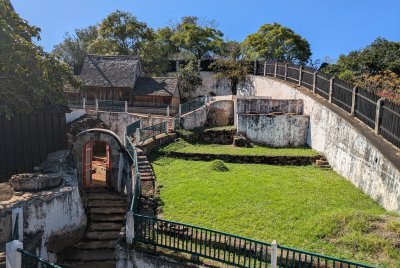
Ambohimanga is one of those places I probably wouldn't have bothered to visit if it weren't a WHS. But I'm very glad I did because, the visit, combined with a visit to the Queen's Palace in Tana, gave me a much better understanding of Madagascar's pre-colonial history. I had a private driver to take me to the Royal Hill of Ambohimanga, about an hour outside of Tana. It's not a huge site, you can spend about an hour there. One there, I picked up a guide at the entrance who spoke very good english. She was very informative. After a brief overview of the fortress from the ceremonial courtyard, and the large sacrificial stone where zebu were sacrificed, we proceeded inside the complex. One of the most interesting buildings is the King's Palace, which was the house of King Andrianampoinimerina who reigned 1787-1810. It's a very modest wooden house. Inside, my guide did a nice job of explaining the various implements on display, as well as explaining the sleeping arrangements, and how the king's bed was always in the one corner, and higher up than where his wife would sleep. He (and subsequent rulers here) didn't rule all of Madagascar, but they did unify many kingdoms in the center/east and established 12 royal residences on nearby hilltops, including the Queen's Palace in Antananarivo. There's also a Queen's palace here at Ambohimanga, a more European looking wooden structure that was the house of Queen Ranavalona I. There's a bit of evidence …
Keep reading 0 comments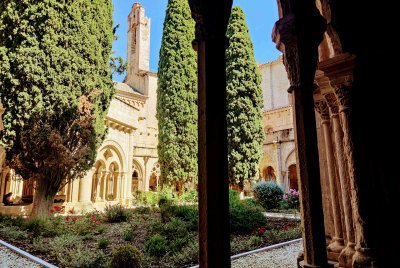
I have to agree with Andrew_Kerr that this site deserves higher ratings than it was previously receiving, and from reading the older reviews it seems to be largely due to the way in which the tour system has been re-worked. Whereas previously an in-person tour was required, the availablity of these has now become significantly more limited as they have been supplanted with an audio guide that you can use to enter the full monastery at any time and tour at your own pace. (I say "full monastery" to refer to the large section open to tourists, though, as this is still an actively used monastery so there are sections exclusively reserved for the monks which travellers cannot enter.)
Poblet is located decently far away from any major cities, so the tourist traffic here is significantly less than you'll find in other WHS sites. I've been a little bit over-exposed to monasteries & cathedrals during my past nine months living in Spain so you should expect that if you haven't been seeing a new cathedral every few weeks, this site will impress you even more. The audio guide is well narrated in multiple languages and helpfully tours you through each section and room of the monastery, ensuring you don't miss anything. The stark Cisterian style of architecture with limited decoration is quite powerful and lends to a sense of austerity in the place, but not so much as to make the location boring. It's neat to see all the …
Keep reading 0 comments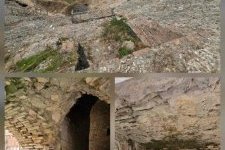
We stayed in Duress for a week in early June 2025 and took the opportunity to visit this TWHS site. I have noted the other reviews and sadly the site remains the same and probably has deteriorated further. The site is central in the city of Duress and the urban sprawl surrounds the site, which I would say if excavated further perhaps would uncover considerably more of the Ampitheatre itself. This may or may not include artifacts or other mosaics. There is one notable mosaic in the ruins which is open to viewing. Cost of entry to the site is 300 LEK, which is very reasonable.
The site does not appear to be well kept with rubbish strewn throughout the site. Relevant areas within the site though does have information panels to describe some of the more notable areas / structures within the Ampitheatre. It is noted that in 1991, that its WHS was declined, although it was of great significance to Duress and Albania itself. For this significance to remain, some investment is needed to maintain and preserve this site. I cannot see this site being inscribed in its current state, albeit it was nice to wander around the site and visit.
Keep reading 0 comments
I visited Nara as a full day trip from Kyoto in November 2024. I got first glimpse of the WHS already from the train as the train tracks pass through the Heijo Palace Site! However, it's not much more than a field with some replica gates and walls and seeing it from the train seemed enough.
After arriving to the Kintetsu-Nara station I headed towards the Todai-ji temple by walking. I first visited in Yoshikien Garden, which has free entrance and is very much worth visiting! The garden's exit lead directly to the Namdaimon Gate of Todai-ji (pictured). The gate is very massive and I should have guessed that the size of it was a sign of what was to come. The entrance way towards Todai-ji's Great Buddha Hall is very busy with tourists and deer, and this was the busiest site I visited in Nara. Despite its huge size you won't see the Great Buddha Hall until you enter the ticket office of it. For some reason I wasn't expecting to see such a magnificent building in Nara! And the building was originally even larger! They have miniature replica of the original one inside the hall. The Great Buddha statue is also huge and no photo can make justice of its size. The Great Buddha Hall of Todai-ji is the most impressive temple building I have visited in Japan. After visiting the hall I visited some of the lesser buildings of Todai-ji, like Nigatsu-do which has a balcony …
Keep reading 0 comments
I recently came from a trip to Fujian where I stayed in Quanzhou for four days. This allowed me to visit 16 component sites leaving only the farthest six out. Taking the recommendation of earlier reviews, I checked out the wind-praying inscriptions at Jiurishan upon arriving at the railway station. An AAAAA tourist attraction, the site is equipped with a luggage storage facility, which makes such arrangement convenient. Officially, Jiurishan is considered as the very starting point of the Maritime Silk Road. So, it was good to start here. While the site does not have entrance fees, the two other "sacred mountains" of Quanzhou namely, Quinyuanshan (Stone statue of Lao Tze) and Lingshan (Islamic Tombs) require a steep 75RMB entrance fee each! Luckily, the ticket offices recognize the ICOMOS card, so I was able to enter for free. These three scenic spots, of which Quinyuanshan is in fact a sprawling national park that can easily take a day to explore, provide pleasant respites from the busy city. View points in Quinyuanshan offer amazing views of modern Quanzhou, too. What makes China enjoyable is the ease of transportation with their Alipay that already contains the Didi Travel app -- one cannot complain in paying only eight Dollars in covering a distance of 12 kilometers, for example. We used the old city as our base for the first two days, staying close to Kaiyuan Temple. This allows easy explorations to the temple and its historic block, and the adjoining …
Keep reading 0 comments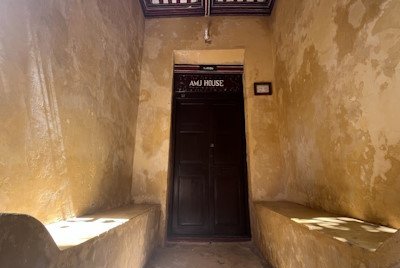
I stayed for two nights in a renovated traditional house along one of the narrow alleyways of the Old Town of Lamu. I enjoyed being woken up by the call to prayer (this is a conservative Islamic society) and having a hearty Swahili breakfast in the morning. Due to the thick walls, my room was quite dark all day, but a breeze and vitamin D (handy for the muslim ladies who in the past weren’t allowed to get out) is provided in these houses by the interior courtyard, open-air sitting areas and a rooftop terrace. It wasn’t easy to get into such a house in the past – there’s a massive wooden front door plus an attached waiting area outside (pictured). Many such houses still exist in the Old Town, often bought by foreigners since they are too expensive for locals (not only the purchase but also the renovations and the upkeep).
I walked the town’s streets many times, once also with a private guide. The starting point is the central square, which lies behind the white ‘Welcome to Lamu, a UNESCO World Heritage Site’ arches and in front of Lamu Fort. The fort was built at the coast, but there is now a block of buildings and a corniche in between on land reclaimed from the sea during the British period. The square is a popular meeting place and there are benches all around for (mostly) men to linger about.
From here you can walk into …
Keep reading 0 comments
I love Paris. It is one of the first places that comes to my mind in the context of "there is no other place I'd rather be". We've been to this wonderful city dozens of times, but for various reasons, only passingly in the last decade and a half. In April of 2025, we made a concerted effort to reacquaint ourselves with Paris.
The city is still wonderful - there are not enough superlatives to express that. However, in the last few years, it has become significantly more time-consuming to visit the most popular attractions. I remember twenty years ago walking up to the Louvre Pyramid in the afternoon or to Sainte-Chapelle whenever I felt like it, and getting inside in a matter of minutes. These days, with hundreds of online tickets sold for timed entry and then the entrance intervals strictly enforced with time-marked lines, coupled with airport-level security checks that create non-trivial bottlenecks, getting inside a top sight may easily require upward of an hour.
A Saturday in mid-April is definitely a busier time than a Wednesday in January, so unlike Aitia, we weren't able to get into Notre-Dame at all. We actually wanted to buy tickets in advance, but they become available only a few days ahead and get sold out in minutes. On the day, Place Jean-Paul II was almost entirely overtaken by the entry-lane barriers. If that was a "walk-in" line, its visible standstill suggested at least a 90-minute wait; if people in …
Keep reading 0 comments